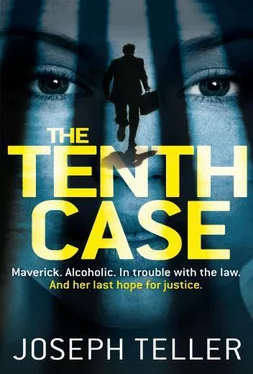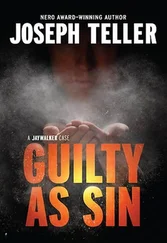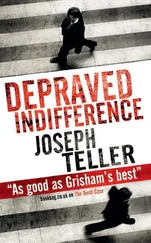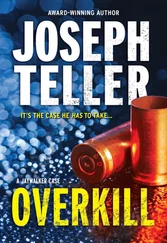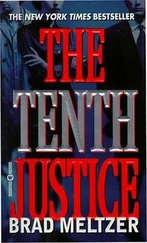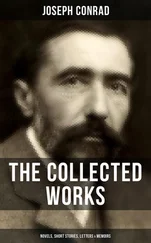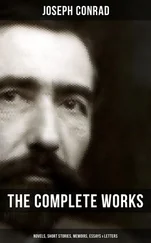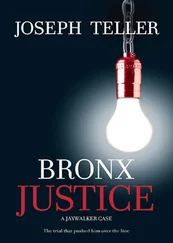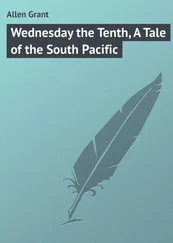Joseph Teller - The Tenth Case
Здесь есть возможность читать онлайн «Joseph Teller - The Tenth Case» — ознакомительный отрывок электронной книги совершенно бесплатно, а после прочтения отрывка купить полную версию. В некоторых случаях можно слушать аудио, скачать через торрент в формате fb2 и присутствует краткое содержание. Жанр: Криминальный детектив, на английском языке. Описание произведения, (предисловие) а так же отзывы посетителей доступны на портале библиотеки ЛибКат.
- Название:The Tenth Case
- Автор:
- Жанр:
- Год:неизвестен
- ISBN:нет данных
- Рейтинг книги:3 / 5. Голосов: 1
-
Избранное:Добавить в избранное
- Отзывы:
-
Ваша оценка:
- 60
- 1
- 2
- 3
- 4
- 5
The Tenth Case: краткое содержание, описание и аннотация
Предлагаем к чтению аннотацию, описание, краткое содержание или предисловие (зависит от того, что написал сам автор книги «The Tenth Case»). Если вы не нашли необходимую информацию о книге — напишите в комментариях, мы постараемся отыскать её.
The Tenth Case — читать онлайн ознакомительный отрывок
Ниже представлен текст книги, разбитый по страницам. Система сохранения места последней прочитанной страницы, позволяет с удобством читать онлайн бесплатно книгу «The Tenth Case», без необходимости каждый раз заново искать на чём Вы остановились. Поставьте закладку, и сможете в любой момент перейти на страницу, на которой закончили чтение.
Интервал:
Закладка:
MR. BURKE: How large was the wound?
DR. HIRSCH: Superficially, that is, on the sur face, it was about three quarters of an inch in length, from left to right, by about one sixteenth of an inch in width. In terms of penetration, it was approxi mately five inches deep.
MR. BURKE: Were you able to determine where it led to?
DR. HIRSCH: Yes. By inserting a metal probe and following the path of least resistance, I was able to track the wound from its point of entry at the skin, and from there through the various layers of fat and muscle tissue. Whether by luck or design, it passed between two of the victim's ribs. From there it en tered the chest cavity and proceeded through the wall of the pericardium. The pericardium is a sac that sur rounds and contains the heart. Once inside the peri cardium, the track continued and entered the left ventricle of the heart, rupturing it.
MR. BURKE: What happens when the left ven tricle of the heart is ruptured?
DR. HIRSCH: Unless there's immediate medi cal intervention, massive bleeding occurs. That bleeding can be into the chest cavity, into the lungs, or out of the entrance wound itself.
MR. BURKE: And in this particular case?
DR. HIRSCH: In this particular case, it was all three. The individual bled into his chest cavity and his lungs, as well as out through the entrance wound. Hence the blood we see on the upper body garments he was wearing. Furthermore, the amount of blood on those garments, which was fairly significant, sug gests that the instrument that had caused the wound was removed relatively quickly, probably before death. Otherwise, given the narrowness of the wound, the continued presence of the instrument would likely have acted something like a cork or stopper, limiting the volume of blood that could have escaped through the wound.
MR. BURKE: Can you tell us, to a degree of medical certainty, what the cause of death was?
DR. HIRSCH: Yes. The victim's heart stopped because of a massive loss of blood. That massive loss of blood was the direct result of the rupture to the left ventricle of his heart.
MR. BURKE: From examining the wound, can you tell us anything about the instrument that caused it?
DR. HIRSCH: Yes. I can tell you that it was a thin blade of some sort, no more than three-quarters of an inch wide, and no more than a sixteenth of an inch in thickness. It was sharply pointed at the tip. It was at least partly serrated on the cutting edge.
MR. BURKE: How do you know that?
DR. HIRSCH: I know that because I was able to observe a jagged tearing pattern in the tissue along one edge of the wound track, as opposed to a smooth pattern along the opposite edge.
MR. BURKE: Can you tell us anything about the length of the instrument that pro duced the wound?
DR. HIRSCH: I can say with certainty that the blade was at least five inches in length. Otherwise, the tip would not have reached as far as it did. I am less certain about its maximum length, but my belief is
Jaywalker put one hand on the table in front of him, pre paring to rise. The witness was about to speculate, and an objection might well be sustained. But the last thing Jay walker wanted to do was give the jury the impression that he was trying to keep things out. Besides, from studying the autopsy report, he knew where this was going and didn't see how it would hurt. He decided to let the witness continue. Trials were like that. You had a split second in which to consider and weigh seven or eight variables before making a decision that might well determine the outcome of the entire trial. You learned to do it. After a while, you learned to do it without even thinking about it on a con
scious level. There was no room for the hesitant at trial, no place for the second-guesser. — that the blade was just about five inches, and no longer.
MR. BURKE: Upon what do you base that be lief?
DR. HIRSCH: I base it upon my observation of a small depressed area surrounding the skin at the very beginning of the wound track. That depression suggests to me that the instrument used to inflict the wound was a knife with a handle, and the hilt, the per pendicular part that separates the blade from the han dle and serves as a safety device of sorts, struck the skin with sufficient force to create a stamp, if you will. It's my belief that it was the presence of that hilt that stopped the knife from penetrating even deeper.
Furthermore, it very probably tells us the overall length of the blade, though certainly not that of the handle, or therefore the total length of the knife itself.
At that point Burke withdrew from underneath the lectern an item wrapped in brown paper. He identified it as People's Exhibit 5, for identification and subject to con nection. As before, he had a court officer hand it to the witness. Unwrapped, it appeared to be a silver-colored steak knife with a thin pointed blade and a serrated cutting edge. The blade looked to be about five inches long, by perhaps three-quarters of an inch wide. Separating the blade from the handle was a hilt.
MR. BURKE: Doctor, please take a look at that knife. First, have you ever seen it before?
DR. HIRSCH: Yes, you showed it to me several weeks ago, and again earlier this morning.
MR. BURKE: Are the properties of that knife consistent with the wound you observed during your postmortem examination of Barry Tannenbaum?
DR. HIRSCH: Yes, they are.
MR. BURKE: In every way?
DR. HIRSCH: In every way.
Finally Burke did what good prosecutors do. He antici pated the areas ripe for cross-examination and tried to limit any gains Jaywalker might be able to make in exploring them. Hirsch had identified some general health concerns during his autopsy of Barry Tannenbaum and addressed them in his report. Specifically, there had been evidence of fairly advanced prostate cancer, with infiltration into the colon and bladder. There had also been a tumor, about the size of a golf ball, in Tannenbaum's large intestine. Finally, the heart itself had been enlarged, and there was some evidence of old scarring. Taken together, according to Hirsch, these last two findings were indicative of chronic heart disease. More specifically, they suggested that at some time in the past, perhaps as far back as a decade or more, Tannenbaum had survived a heart attack.
MR. BURKE: Did any of those things, either separately or in combination with each other, contrib ute in any way to the death of Mr. Tannenbaum?
DR. HIRSCH: No, absolutely not. This death was clearly a homicide, caused by bleeding due to the rupture of the left ventricle of the heart. Nothing more, nothing less.
During the autopsy, Hirsch had removed samples of blood, brain tissue and liver, and submitted those samples for laboratory study. The results had come back in the form of serology and toxicology reports. A small level of ethanol had been detected, as well as a moderate amount of Seconal, a barbiturate.
MR. BURKE: First of all, what is ethanol?
DR. HIRSCH: Ethanol is ethyl alcohol. It's the kind we ingest when we drink a beer, a glass of wine or a mixed drink.
MR. BURKE: How about a straight drink?
DR. HIRSCH: That, too.
Which brought a couple of laughs from the jury box, perhaps at the expense of Burke's Irish ancestry.
MR. BURKE: Are you able to tell us how much Mr. Tannenbaum had had to drink?
DR. HIRSCH: Yes. He'd had perhaps a single drink, no more than one and a half, during the six hours preceding his death.
MR. BURKE: And the Seconal?
DR. HIRSCH: That's a bit harder to quantify. Two pills, three or four at most. In other words, the amount an individual would take in order to sleep, as suming he'd experienced difficulty doing so, and had built up a bit of tolerance to the medication over time.
MR. BURKE: And did either the alcohol or the Seconal, alone or in combination, contribute in any way to Mr. Tannenbaum's death?
Читать дальшеИнтервал:
Закладка:
Похожие книги на «The Tenth Case»
Представляем Вашему вниманию похожие книги на «The Tenth Case» списком для выбора. Мы отобрали схожую по названию и смыслу литературу в надежде предоставить читателям больше вариантов отыскать новые, интересные, ещё непрочитанные произведения.
Обсуждение, отзывы о книге «The Tenth Case» и просто собственные мнения читателей. Оставьте ваши комментарии, напишите, что Вы думаете о произведении, его смысле или главных героях. Укажите что конкретно понравилось, а что нет, и почему Вы так считаете.
